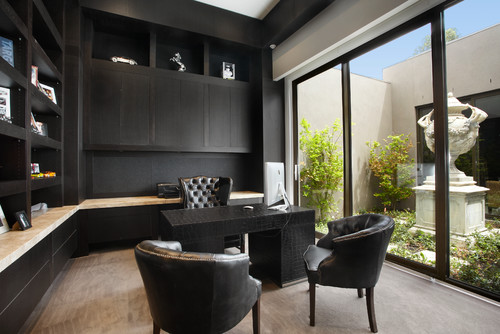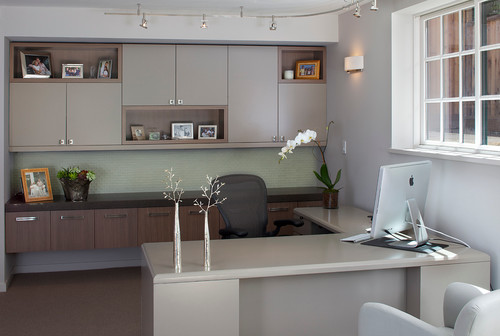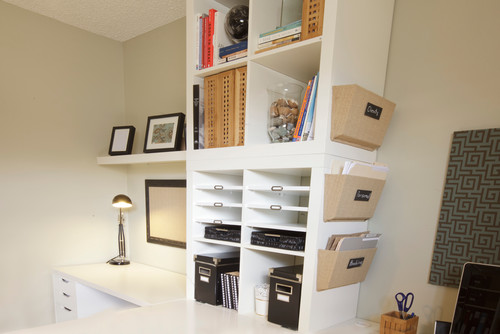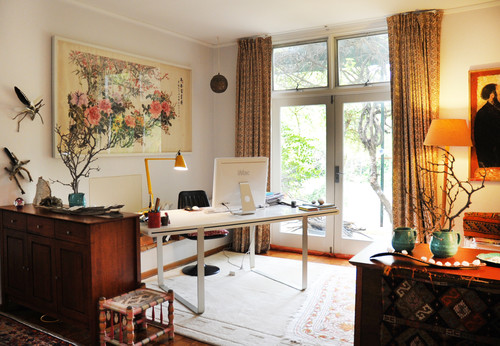Organise your home office with these 6 tips
Whether you work from home or just catch up on after hours paperwork from time to time, a home office is an essential fit-for-purpose space. For some it can be an extremely personal space and if it’s a place you spend a fair bit of time in, it’s worth investing the effort into making it both organised and reflective of your own personal taste. Regardless of whether you prefer a sophisticated, minimalist or practical style of space, it’s important for your home office to be functional so we’ve put together five ideas for organising your office to make it more effective:
1. Establish how the space is used
When organising your home office, it’s important to consider how it is used and what is necessary for your office space.
Do you need to meet with people?
Will you be housing a lot of books/stationary/files?
Are there items that you need, but are only used sparingly?
By answering these questions you can effectively determine how your space needs to be set out.
Think of ‘zones’ you can create, and keep necessary items in those zones. Most home offices will have a ‘computer zone’ and a ‘non-computer zone’ where traditional paper work will be done. Keep appropriate items in each zone to ensure maximum efficiency. A pen next to your computer is pointless, as is a data point on the opposite side of the room.
2. Clear your desk
Most people focus better with a clear, uncluttered space, and if your desk is the place where you spend most of your time, it should be kept tidy. Remove anything that’s unnecessary and likely to distract you, or create mess. Utilise desk drawers, or install shelving nearby to house items that you use regularly but not constantly. Objects such as staplers, calculators, or tape dispensers don’t need to be on display, and are as easily accessible when kept in a draw.
Being able to access and use your desk space clearly, without having a multitude of items in the way, will help you work more efficiently.
3. Analyse your paper system
No matter how electronic our world is becoming, there still seems to be a huge amount of paper work bombarding us. Whether it’s old files that can’t be discarded, or new contracts that need a hard copy, storing these can be problematic if you don’t have a great correspondence management system in place.
What works for you will depend on your own personal preferences and office needs, but reviewing how effective your system is is essential to getting organised. An effective paper system leads to less clutter and a more effective use of your work space. Remember the ‘one touch’ rule of organisation – as soon as you get a task, correspondence or other paperwork, deal with it straight away. Either act on it, delegate it, file it or throw it away. This can prevent hours of filing piles of paperwork later on.
4. Create a collection space
Every home has a spot where things gravitate to, and because it’s going to happen, you might as well create a spot for it. Have a designated space for things that usually get dumped, like keys, wallet, sunglasses and even rubbish. The use of hooks, bowls, in-trays, and a rubbish bin ensures that everything has a home and prevents your office from becoming a dumping ground.
5. Create data points
With all the electronic devices we rely upon to work from home nowadays, placement of power sources and data points is an essential consideration. Charging lots of phones, tablets and laptops in one place can become unbearably messy so things like data charging points help minimise clutter and chunky charging stations.
A usb charging station like this one from Luminosa is so much more sexy than lots of adaptors cluttering your office space.
6. Keep your home and your office separate
When working from home, often the lines between ‘work’ and ‘home’ can be more than a little blurry both in time and place. Regardless of whether you have a stand alone home office or a humble office nook, creating a clear distinction between where your office begins and ends is important on a number of levels. Creating a separation helps to identify when you’re in work mode and then once you’ve stepped away from your designated work space can help to trigger that feeling of leaving work at work and getting on with home activities. Creating a separation of space may be as simple as closing the door if you have that capability. If not, things like mats, partitions, filing cabinets or strategically placed furniture or plants can help to segregate that space. Also turning off lights, shutting laptops, turning off computers and putting away workbooks can ensure that when you’ve left ‘the office’ for the day, you’re less tempted to head back in for a snappy check of your emails.










